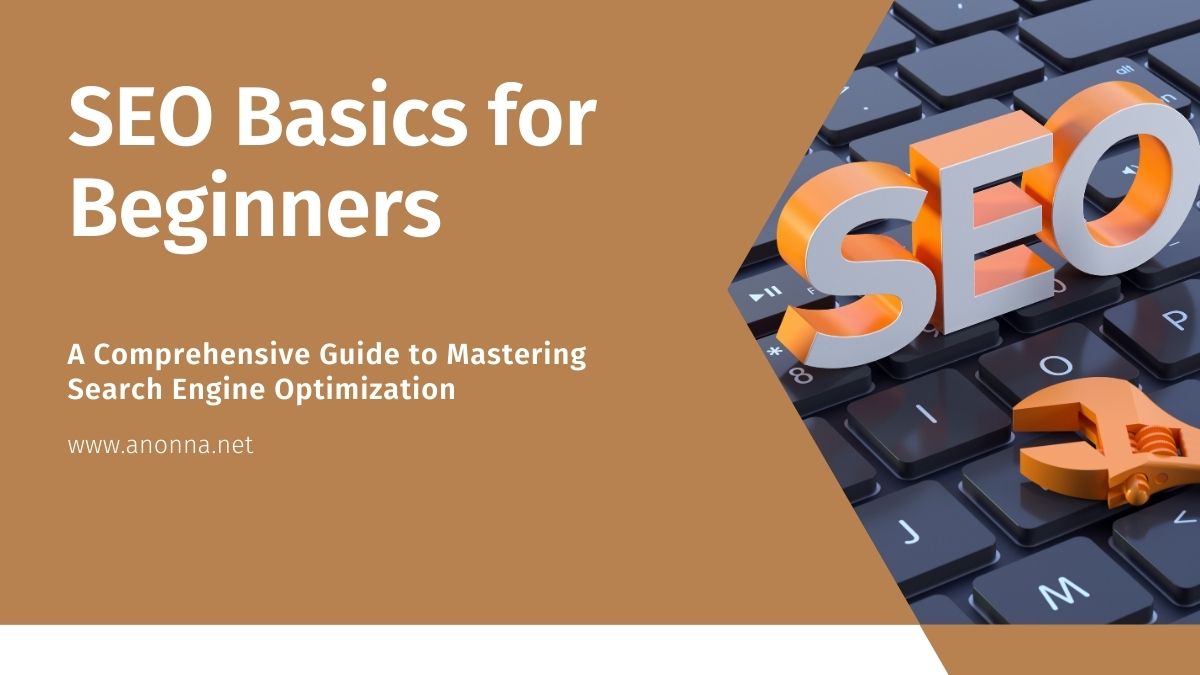
SEO Basics for Beginners: A Comprehensive Guide to Mastering Search Engine Optimization
Search Engine Optimization (SEO) is the practice of optimizing your website or online content to improve its visibility and rankings on search engine results pages (SERPs). As more businesses and individuals establish an online presence, understanding the importance of SEO is crucial to standing out in a crowded digital landscape. Whether you are a beginner or someone looking to refine your skills, SEO is a key component in driving organic traffic and boosting your site’s performance. This article will walk you through the basics of SEO, how it impacts your online presence, and why learning SEO is essential for beginners.
What is SEO and Why is it Important?
SEO is a set of strategies and techniques used to improve a website’s position in search engine results, ensuring that your site is visible to users who are searching for topics relevant to your content. The goal of SEO is to increase the quantity and quality of organic traffic to your site by making it more discoverable in search engines like Google, Bing, and Yahoo.
With billions of searches made every day, the competition for visibility in search results is fierce. By optimizing your website for SEO, you increase the chances of appearing in front of your target audience, thereby driving more traffic and ultimately achieving your business or personal goals.
Understanding the Basics of SEO
SEO involves a combination of on-page and off-page techniques to improve your rankings. Here’s a quick breakdown of the basics:
- On-Page SEO: Refers to the factors that are within your control on your website, such as keyword usage, content quality, page titles, meta descriptions, and internal linking.
- Off-Page SEO: Involves actions outside your website that influence your rankings, such as building backlinks, social media signals, and influencer outreach.
- Technical SEO: Refers to the optimization of your website’s technical aspects like page speed, mobile optimization, and site architecture to ensure search engines can crawl and index your pages effectively.
By understanding these foundational SEO concepts, you will be able to implement strategies that enhance your site’s visibility and overall performance in search engine results.

How SEO Impacts Your Online Presence
A strong SEO strategy can significantly impact your online presence by improving your site’s visibility in search engine results. Here’s how:
- Increased Visibility: With SEO, your website is more likely to appear in relevant searches, putting it in front of potential visitors who are actively looking for the content or products you offer.
- Enhanced User Experience: SEO focuses not just on ranking factors but also on improving the user experience. By optimizing page load times, navigation, and mobile-friendliness, users are more likely to stay on your site longer and engage with your content.
- Credibility and Trust: Websites that rank higher in search results are often perceived as more credible and trustworthy. SEO helps you build authority through high-quality content and backlinks, which in turn fosters trust with both users and search engines.
By improving your site’s visibility and user experience, SEO helps establish a robust online presence that attracts visitors, builds brand awareness, and generates more conversions.
The Benefits of Learning SEO for Beginners
For beginners, learning SEO can offer several benefits:
- Increased Traffic: Effective SEO brings more organic traffic to your website, reducing reliance on paid advertising and boosting long-term visibility.
- Cost-Effective Marketing: Unlike paid advertising, SEO is a long-term, sustainable marketing strategy that requires an investment of time and effort rather than a large financial budget.
- Career Opportunities: SEO skills are in high demand as businesses of all sizes seek professionals who can help them grow their online presence. Mastering SEO can open up job opportunities in digital marketing, content creation, and web development.
- Competitive Advantage: In a digital world where everyone is competing for attention, SEO helps you get ahead by ensuring that your website appears when potential customers are searching for products or services like yours.
By learning SEO, you equip yourself with the knowledge and tools to drive meaningful traffic to your website, boost conversions, and gain a competitive edge in the digital marketplace.
SEO is not just about ranking high in search engines; it’s about providing value to your users, enhancing your online visibility, and fostering trust with both search engines and visitors. By understanding the basics of SEO and implementing effective strategies, you can ensure that your website stands out and attracts the audience it deserves.
Chapter 1: The Fundamentals of SEO
To build a solid SEO foundation, it’s essential to understand the core elements that contribute to optimizing your website. In this chapter, we’ll explore the role of keywords, the difference between on-page and off-page SEO, and how to leverage these elements to improve your search engine rankings.
The Role of Keywords in SEO
Keywords are the cornerstone of SEO. They are the terms and phrases users type into search engines when looking for information, products, or services. By strategically targeting relevant keywords on your website, you can ensure that your content appears in front of the right audience when they search for topics related to your niche.
What Are Keywords?
Keywords are words or phrases that describe the content of a webpage and are used by search engines to match queries with relevant results. Keywords can range from a single word (e.g., “shoes”) to more specific phrases (e.g., “best running shoes for women”). Choosing the right keywords ensures that your website ranks for the terms your target audience is searching for.
There are two main types of keywords:
- Short-Tail Keywords: These are broad, generic terms with high search volume, such as “SEO” or “digital marketing.”
- Long-Tail Keywords: These are longer, more specific phrases with lower search volume but less competition, such as “how to improve SEO for small business websites” or “affordable SEO services for startups.”
Both types of keywords play a role in SEO strategy, depending on your goals and the type of content you’re creating.
How to Choose the Right Keywords for Your Website
Choosing the right keywords is vital to SEO success. To select effective keywords for your website, follow these steps:
- Research Your Audience: Understand what terms and phrases your target audience is likely to use when searching for your products, services, or content.
- Use Keyword Research Tools: Tools like Google Keyword Planner, SEMrush, and Ahrefs can help you find popular keywords and analyze search volume, competition, and relevance.
- Analyze Competitors: Look at the keywords your competitors are targeting. This can provide insight into what works and help you find untapped opportunities.
- Focus on Intent: Ensure that the keywords you choose align with the searcher’s intent. For example, someone searching for “buy SEO tools” has a commercial intent, while someone searching for “how SEO works” is likely seeking informational content.
- Consider Search Volume and Competition: Ideally, select keywords with a balance of high search volume and manageable competition. Extremely competitive keywords may be hard to rank for, especially if you’re just starting out.
Choosing the right keywords ensures that you are targeting the terms your audience is actively searching for, which increases your chances of driving organic traffic to your site.
Long-Tail Keywords vs. Short-Tail Keywords
When selecting keywords, you’ll encounter two types: long-tail and short-tail keywords. Here’s how they differ and why both are important:
- Short-Tail Keywords: These are usually one or two words long and have high search volume, making them highly competitive. For example, “SEO” or “content marketing.” While they can drive significant traffic, they are often difficult to rank for due to high competition.
- Pros: High search volume, broad reach.
- Cons: High competition, harder to rank for, less targeted.
- Long-Tail Keywords: These are longer, more specific phrases (typically three or more words). They may have lower search volume, but they are less competitive and often result in higher conversion rates because they are highly targeted.
- Pros: Lower competition, more targeted traffic, higher conversion potential.
- Cons: Lower search volume, requires more content to rank for multiple long-tail keywords.
A successful SEO strategy typically involves a combination of both long-tail and short-tail keywords. Short-tail keywords help you reach a broad audience, while long-tail keywords attract more qualified visitors who are more likely to convert.
On-Page SEO vs. Off-Page SEO
SEO can be divided into two main categories: on-page SEO and off-page SEO. Both are crucial for improving your search engine rankings, but they focus on different aspects of optimization.
What is On-Page SEO?
On-page SEO refers to the strategies you implement on your own website to improve its rankings in search engine results. It involves optimizing elements on your site that are within your control, such as content, HTML structure, and internal linking. On-page SEO ensures that your website is optimized for both search engines and users.
Key on-page SEO factors include:
- Title Tags: The title tag is an HTML element that specifies the title of a web page. It should include relevant keywords and be concise yet descriptive.
- Meta Descriptions: The meta description is a brief summary of the page’s content. It should include relevant keywords and be compelling to encourage clicks from search results.
- Headings (H1, H2, H3): Proper use of headings organizes your content and helps search engines understand the structure and importance of your content.
- Keyword Optimization: Strategically using relevant keywords in your content, titles, headings, and URL can help search engines understand what your page is about.
- Internal Linking: Linking to other pages on your website helps search engines crawl and index your content while guiding users to relevant information.
- Content Quality: Content is king in SEO. High-quality, informative, and engaging content that answers user queries can significantly improve rankings.
By optimizing these on-page elements, you improve the chances of your website ranking higher for relevant keywords.
Key On-Page SEO Factors to Focus On
Here are some key factors to prioritize for effective on-page SEO:
- Content Quality: Focus on creating content that provides real value to users. Well-researched, informative, and engaging content is more likely to be shared and linked to, which can improve rankings.
- Keyword Usage: Use your target keywords naturally throughout your content, but avoid keyword stuffing. Include them in titles, headings, and within the body text.
- Mobile-Friendliness: Ensure your website is optimized for mobile devices. Google uses mobile-first indexing, meaning it ranks mobile-friendly websites higher in search results.
- Page Speed: A slow-loading page can hurt your rankings and drive visitors away. Use tools like Google PageSpeed Insights to identify and fix speed issues.
- User Experience (UX): Provide a clean, easy-to-navigate website that offers a positive experience for users. A well-designed site reduces bounce rates and increases engagement.
By focusing on these on-page SEO factors, you can create a website that is optimized for both search engines and visitors.
What is Off-Page SEO?
Off-page SEO refers to strategies that occur outside of your website to improve its authority and ranking. It primarily focuses on backlinks (links from other websites to your site) and social signals, which influence how search engines perceive your website’s authority and relevance.
Key off-page SEO factors include:
- Backlinks: Backlinks are a crucial ranking factor. High-quality, relevant backlinks from authoritative sites signal to search engines that your content is trustworthy and valuable.
- Social Media: Social signals (likes, shares, and mentions on platforms like Facebook, Twitter, and Instagram) can indirectly affect rankings by driving traffic to your website and increasing brand visibility.
- Brand Mentions: Even if they don’t include a link, mentions of your brand across the web can signal authority and relevance to search engines.
- Guest Blogging: Writing guest posts for other blogs can help you acquire backlinks while building relationships within your industry.
Off-page SEO helps you build credibility and authority, which in turn enhances your on-page optimization efforts.
Building Your Off-Page SEO Strategy
To effectively build your off-page SEO strategy, consider the following tactics:
- Build Quality Backlinks: Focus on acquiring backlinks from high-authority websites within your niche. Avoid spammy or low-quality backlinks that can harm your site’s reputation.
- Leverage Social Media: Share your content on social media platforms and engage with your audience. Social signals can help increase traffic and visibility.
- Participate in Industry Forums: Engage with communities and forums in your industry. Sharing your expertise and linking to your site where appropriate can help you gain valuable backlinks.
- Influencer Outreach: Collaborate with influencers in your niche to promote your content. Influencers can drive traffic to your site and generate high-quality backlinks.
- Monitor Your Backlink Profile: Regularly check your backlink profile using tools like Ahrefs or SEMrush to ensure you are getting high-quality links and disavowing any harmful ones.
By focusing on these off-page SEO strategies, you can build a strong, credible online presence that will improve your site’s rankings and attract more organic traffic.
In this chapter, we’ve explored the fundamentals of SEO, including the role of keywords, the difference between on-page and off-page SEO, and key strategies for success. By mastering these foundational concepts, you can set yourself up for long-term success in improving your website’s visibility and driving traffic.
Chapter 2: Optimizing Your Website for Search Engines
Optimizing your website for search engines is crucial for improving your rankings and enhancing user experience. In this chapter, we’ll discuss how to structure your website, ensure it’s mobile-friendly, and speed up page load times. Additionally, we’ll delve into creating SEO-friendly content that not only ranks well in search engines but also engages your visitors.
How to Optimize Your Website Structure
The structure of your website plays a significant role in how search engines crawl and index your pages, as well as in how users navigate through your site. A well-organized and easy-to-navigate website ensures both search engines and visitors have a positive experience.
The Importance of a User-Friendly Website Design
A user-friendly website design is essential for both SEO and visitor engagement. When visitors can easily find what they’re looking for, they’re more likely to stay on your site longer, reducing bounce rates and improving your chances of converting them into customers or subscribers. A good website design includes:
- Simple Navigation: A clean, intuitive navigation bar helps users find information quickly and easily. Keep it minimal and categorize pages logically.
- Clear Calls-to-Action (CTAs): Make sure your calls-to-action are prominent and easy to find. This encourages users to take the next step, whether it’s making a purchase, signing up for a newsletter, or downloading a resource.
- Accessible Design: Ensure your website is accessible to all users, including those with disabilities. This includes using legible fonts, appropriate contrast, and image alt texts for screen readers.
A well-designed site not only enhances user experience but also helps search engines understand your site’s structure, improving its chances of ranking higher.
Mobile Optimization: Why It Matters for SEO
Mobile optimization has become a critical factor in SEO. With the increasing use of mobile devices for internet browsing, search engines like Google have adopted mobile-first indexing, meaning they primarily use the mobile version of your site for ranking and indexing. Here’s why mobile optimization matters:
- Better User Experience: Mobile-friendly websites adjust to different screen sizes, ensuring visitors have a positive experience, regardless of the device they are using.
- Improved Rankings: Google considers mobile optimization as a ranking factor. Websites that are not mobile-friendly may see their rankings drop in mobile search results.
- Faster Load Times: Mobile optimization often involves reducing image sizes and minimizing scripts to enhance page speed, which is a key ranking factor.
To optimize your website for mobile, use responsive web design, test your site’s mobile performance, and ensure that all content is accessible on smaller screens.
Site Speed and SEO: What You Need to Know
Page speed is an important ranking factor for SEO. Slow-loading websites can frustrate visitors, leading to higher bounce rates and decreased conversions. Additionally, search engines like Google prioritize fast-loading sites to ensure a good user experience. Here’s how site speed affects SEO:
- Impact on Rankings: Websites with fast loading times are more likely to rank higher in search engine results. Google uses page speed as a ranking factor, especially for mobile searches.
- User Retention: A slow website can drive visitors away before they even have a chance to interact with your content. Studies show that if a page takes longer than 3 seconds to load, users are more likely to leave.
- Core Web Vitals: Google’s Core Web Vitals are a set of user-centered metrics that focus on the loading performance, interactivity, and visual stability of a page. These factors directly impact rankings.
To improve your website’s speed, consider optimizing images, reducing the number of HTTP requests, leveraging browser caching, and using a content delivery network (CDN).
Crafting SEO-Friendly Content
Content is the heart of SEO. High-quality content not only helps you rank higher in search engines but also provides value to your visitors, keeping them engaged. This section will cover how to write content that ranks, use proper headings, leverage internal linking, and optimize images for SEO.
How to Write Content That Ranks
To write content that ranks well in search engines, focus on creating high-quality, valuable content that answers the questions or solves the problems your target audience is searching for. Here are some tips:
- Use Targeted Keywords: Integrate your primary and secondary keywords naturally into your content. Avoid keyword stuffing, which can harm readability and rankings.
- Create In-Depth Content: Google tends to favor content that is comprehensive and thoroughly answers user queries. Aim to cover a topic in depth, providing detailed explanations, examples, and solutions.
- Answer User Intent: Focus on user intent by answering their questions directly. Consider the type of content your audience is seeking (informational, transactional, etc.) and create content tailored to meet those needs.
- Include Rich Media: Add images, videos, infographics, or charts to complement your written content. This enhances the user experience and makes your page more engaging.
Quality content that provides real value will naturally attract backlinks, which can improve your rankings.
Using Proper Headings (H1, H2, H3 Tags)
Headings (H1, H2, H3, etc.) are critical for both user experience and SEO. They help structure your content, making it easier for visitors to scan and navigate, while also signaling to search engines what the page is about. Here’s how to use headings effectively:
- H1 Tag: This is the main title of the page and should include your primary keyword. Each page should have one H1 tag.
- H2 Tags: These are used for major sections of content and can include secondary keywords. They help break up your content into digestible sections.
- H3 Tags: These are used for subsections under H2 tags. They provide further organization and should be used to elaborate on specific points.
Proper use of headings makes your content easier to read for both users and search engines, improving your chances of ranking higher in search results.
The Power of Internal Linking
Internal linking is the practice of linking to other pages or blog posts on your own website. This is an important SEO strategy for several reasons:
- Improves Site Navigation: Internal links help users discover more of your content, increasing the time they spend on your site.
- Distributes Link Equity: Internal links help distribute authority and link equity across your site, signaling to search engines which pages are important.
- Enhances Crawlability: Internal links allow search engine bots to crawl your site more effectively, helping them index your pages and rank them accordingly.
Be sure to link to relevant pages within your content and use descriptive anchor text (text that serves as the clickable link) to guide users and search engines to related content.
How to Optimize Images for SEO
Images can improve user experience and increase engagement, but they also play an important role in SEO. Optimizing images helps your site load faster, which impacts both rankings and user experience. Here’s how to optimize images for SEO:
- Use Descriptive File Names: Instead of generic file names like “image1.jpg,” use descriptive keywords that tell search engines what the image is about (e.g., “blue-running-shoes.jpg”).
- Add Alt Text: Alt text (alternative text) is a description of the image that appears if the image cannot be displayed. It also helps search engines understand what the image is about. Use relevant keywords in your alt text, but keep it natural and descriptive.
- Compress Image Sizes: Large images can slow down your website. Use tools like TinyPNG or ImageOptim to compress images without losing quality.
- Use Proper Image Formats: Choose the right image formats (JPEG for photos, PNG for graphics) and resolutions to ensure a good balance between quality and loading speed.
Image optimization helps improve both the user experience and your chances of ranking well in image search results.
Optimizing your website for search engines is a multifaceted process that involves creating a user-friendly site structure, ensuring mobile compatibility, and improving site speed. Additionally, crafting SEO-friendly content with targeted keywords, proper headings, internal links, and image optimization is essential for boosting your rankings and enhancing user engagement. By following these best practices, you can create a website that is both SEO-optimized and user-friendly.
Chapter 3: Understanding Search Engine Algorithms
Understanding how search engines, particularly Google, rank web pages is crucial for effective SEO. Google’s algorithm is constantly evolving, and staying up-to-date with its updates and changes can help you adapt your SEO strategy. In this chapter, we will explore how Google’s algorithm works, its key components, and important algorithm updates you should be aware of.
How Google’s Algorithm Works
Google’s algorithm is a complex system that determines the relevance and ranking of web pages in response to user queries. It takes into account hundreds of ranking factors to decide which pages should appear on the search engine results pages (SERPs). Google’s goal is to provide the best and most relevant results to its users.
The Role of Google Search Bots
Google uses search bots (also known as crawlers or spiders) to discover, crawl, and index web pages. These bots constantly scan the web, looking for new or updated content to add to Google’s database.
The process works as follows:
- Crawling: Google’s bots start by visiting a website and scanning its content. They follow internal and external links to discover more pages.
- Indexing: Once a page is crawled, Google tries to understand the content and adds it to its index. This index is essentially a vast database of all the web pages Google has discovered and deemed relevant.
- Ranking: When a user enters a search query, Google’s algorithm ranks the indexed pages based on various factors to determine which pages are most relevant to show in the search results.
The key to ranking well is ensuring that Google can crawl, index, and understand your content. This means optimizing your site’s technical structure, content, and user experience so that it can be easily discovered and interpreted by search bots.
Core Web Vitals and User Experience
Google places a strong emphasis on user experience (UX) when ranking websites. Core Web Vitals, a set of metrics introduced by Google in 2020, are used to assess the overall user experience on a website. These metrics focus on three main aspects of page load performance:
- Largest Contentful Paint (LCP): This measures how long it takes for the largest visible content (e.g., image, video, or text block) to load on the page. A good LCP score is under 2.5 seconds.
- First Input Delay (FID): This measures how long it takes for the page to respond to user interaction (e.g., clicking a button or link). A good FID score is under 100 milliseconds.
- Cumulative Layout Shift (CLS): This measures the visual stability of the page as it loads. If elements like images or text shift unexpectedly, it can lead to a poor user experience. A good CLS score is under 0.1.
Improving Core Web Vitals can lead to better rankings because Google aims to provide a seamless browsing experience for its users. Pages with fast load times, smooth interactivity, and stable layouts are rewarded with higher visibility in the search results.
Key Google Algorithm Updates You Should Know
Google frequently updates its search algorithm to improve the quality of search results. Understanding these updates can help you adjust your SEO strategy to avoid penalties and maximize your chances of ranking well. Below are some key algorithm updates you should be aware of.
Google Panda and Penguin Updates
Two of the most significant algorithm updates in Google’s history were the Panda and Penguin updates. These updates were designed to improve the quality of search results by penalizing websites that used manipulative or low-quality SEO practices.
- Google Panda (2011): The Panda update targeted low-quality content. Websites with thin, duplicate, or irrelevant content were penalized. It emphasized the importance of high-quality, unique, and engaging content.
- Impact: If your website had content that was poorly written, duplicated from other sources, or stuffed with keywords, it could be penalized under the Panda update. To recover, focus on creating high-quality, informative content that provides real value to users.
- Google Penguin (2012): The Penguin update focused on link quality. Websites that used manipulative link-building practices, such as buying links or participating in link farms, were penalized. Penguin also addressed over-optimization of anchor text.
- Impact: If your website had an unnatural backlink profile with links from low-quality or irrelevant websites, it could be penalized under the Penguin update. To recover, focus on building high-quality backlinks from authoritative and relevant websites.
Both updates underscored the importance of quality content and ethical SEO practices. Websites with good content, natural backlinks, and a focus on user experience were rewarded, while those that engaged in spammy tactics were penalized.
How to Recover from an Algorithm Penalty
If your website has been affected by a Google algorithm penalty, you’ll need to take corrective actions to recover. Here are some steps you can take to recover from a penalty:
- Identify the Cause: First, determine which algorithm update caused the penalty. You can use Google Search Console to check for manual penalties and monitor changes in your rankings.
- Audit Your Website: Conduct a thorough audit of your website to identify areas of concern. Look for low-quality content, unnatural backlinks, or any other SEO practices that may have violated Google’s guidelines.
- Content: Ensure your content is high-quality, informative, and valuable to your audience. Remove or rewrite thin, duplicate, or outdated content.
- Backlinks: Use tools like Ahrefs or SEMrush to analyze your backlink profile. Disavow harmful backlinks from spammy or irrelevant websites and focus on acquiring high-quality, natural backlinks.
- Improve User Experience: Focus on improving site speed, mobile-friendliness, and Core Web Vitals. Google rewards websites that provide a good user experience, so make sure your site loads quickly, is easy to navigate, and is accessible on all devices.
- Submit a Reconsideration Request: If you’ve received a manual penalty, you can submit a reconsideration request to Google after making the necessary changes. In the request, explain what you’ve done to fix the issues and ask for a review.
- Stay Updated with Google’s Guidelines: Google frequently updates its search guidelines. Stay informed about changes to avoid penalties in the future and adjust your strategy accordingly.
Recovering from a penalty takes time, but with patience and a commitment to ethical SEO practices, you can restore your site’s rankings and visibility.
Understanding Google’s algorithms is essential for improving your website’s SEO performance. By focusing on high-quality content, ethical link-building practices, and a positive user experience, you can align your site with Google’s algorithm updates and improve your chances of ranking well in search results. If your site is affected by a penalty, take proactive steps to identify the cause, fix the issues, and recover your rankings.
Chapter 4: Building and Measuring SEO Success
Building a successful SEO strategy is a long-term endeavor that involves creating valuable content, optimizing your website structure, and ensuring that your website is easily discoverable. However, the true measure of success comes from monitoring performance and making necessary adjustments. In this chapter, we will cover link-building strategies, SEO tools to track your progress, and how to measure SEO results to continuously improve your efforts.
Link Building Strategies for Beginners
Link building is one of the most important aspects of SEO, as it helps improve your website’s authority and visibility. Backlinks (links from other websites pointing to your site) are seen by search engines as a vote of confidence, and the more quality backlinks you have, the higher your chances of ranking well in search results.
Why Backlinks are Crucial for SEO
Backlinks play a significant role in improving search engine rankings, and here’s why:
- Improves Domain Authority: When reputable sites link to your content, it signals to search engines that your site is trustworthy and authoritative. This increases your site’s Domain Authority (DA), which improves your ability to rank in search results.
- Increases Referral Traffic: Backlinks from relevant websites can drive traffic to your site. If users find your content valuable on another website, they may click through to explore your content further.
- Helps Search Engines Discover Your Content: Backlinks help search engines find and index new pages on your website, improving visibility in search results.
In short, the quality and quantity of your backlinks significantly impact how well your site performs in search engine rankings.
Safe and Effective Link Building Techniques
While link building is crucial, it’s important to follow best practices to ensure your efforts are effective and safe from penalties. Here are some ethical and effective link-building strategies:
- Create High-Quality Content: The best way to naturally attract backlinks is by creating exceptional content that people want to link to. Focus on producing in-depth, informative, and valuable content that answers users’ questions or solves their problems.
- Guest Blogging: Writing guest posts on reputable websites within your industry can help you build high-quality backlinks. Ensure that the sites you’re writing for have relevant audiences and authority.
- Broken Link Building: This strategy involves finding broken links on other websites, particularly on pages that are relevant to your content. You can then reach out to the site owner, suggest your own relevant content as a replacement, and request a link.
- Skyscraper Technique: Find popular content within your niche, create even better, more comprehensive content on the same topic, and then reach out to people who linked to the original content, suggesting they link to your improved version.
- Resource Pages and Directories: Look for reputable resource pages or business directories where you can submit your website. Make sure the directory or resource page is relevant to your niche and has high authority.
Avoid tactics like buying backlinks or participating in link farms, as these can result in penalties from search engines.
Using SEO Tools to Track Progress
Once you’ve implemented SEO strategies on your website, it’s essential to track your progress to ensure your efforts are paying off. SEO tools help you monitor various performance metrics, analyze trends, and identify areas for improvement. Below are some key tools to help track your SEO performance.
Google Analytics: A Beginner’s Guide
Google Analytics is one of the most powerful and widely used tools for tracking website performance. It provides detailed insights into user behavior, traffic sources, and conversion rates. Here are some key features you can use to monitor your SEO progress:
- Traffic Overview: Google Analytics provides a comprehensive view of how much organic traffic your website is receiving, as well as the specific pages that are driving traffic.
- User Behavior: You can analyze how users interact with your website, including which pages they visit, how long they stay, and which actions they take. This helps identify areas where your content may need improvement.
- Source/Medium Report: This report shows where your traffic is coming from—whether it’s organic search, paid ads, social media, or referral sources. You can use this data to assess the effectiveness of your SEO efforts.
- Goals and Conversions: By setting up Goals in Google Analytics, you can track how well your site is achieving your business objectives, whether it’s getting people to sign up for your newsletter or making a purchase.
By monitoring these metrics, you can identify trends and make data-driven decisions about your SEO strategy.
Other Essential SEO Tools for Monitoring Performance
In addition to Google Analytics, several other SEO tools can help you track and measure your SEO success. Some of the most popular ones include:
- Google Search Console: Provides valuable data about how your site is performing in Google search results, including keyword rankings, impressions, clicks, and crawl errors. It also helps you monitor and fix technical SEO issues.
- SEMrush: This comprehensive SEO tool allows you to track keyword rankings, analyze competitor strategies, audit your website’s SEO, and discover backlink opportunities.
- Ahrefs: A robust tool for tracking backlinks, keyword rankings, and competitor performance. It provides in-depth insights into your site’s link profile and helps identify potential link-building opportunities.
- Moz: Moz offers various SEO tools for keyword research, site audits, and tracking rankings. Moz’s Domain Authority and Page Authority metrics are widely used to gauge the strength of websites and their pages.
- Ubersuggest: A more budget-friendly SEO tool that offers keyword research, rank tracking, and backlink analysis features. It’s a great tool for beginners looking for a simple yet effective solution.
Using a combination of these tools will give you a comprehensive understanding of your site’s performance and allow you to track and improve your SEO efforts over time.
Measuring SEO Results and Making Adjustments
Measuring SEO results is not only about tracking traffic but also understanding how well your website is meeting your goals. By analyzing key SEO metrics, you can make informed decisions and continuously refine your SEO strategy for better performance.
Key SEO Metrics to Track
Here are some essential SEO metrics to measure your website’s success:
- Organic Traffic: The amount of traffic coming from organic search results is one of the most important indicators of SEO success. You can track this in Google Analytics to see how well your optimization efforts are driving visitors to your site.
- Keyword Rankings: Tracking your keyword rankings allows you to measure how well your content is performing for targeted keywords. Tools like SEMrush and Ahrefs provide detailed insights into keyword performance.
- Bounce Rate: Bounce rate is the percentage of visitors who leave your site after viewing only one page. A high bounce rate may indicate that your content isn’t engaging or relevant, which can negatively affect your rankings.
- Click-Through Rate (CTR): CTR measures the percentage of users who click on your website’s link when it appears in search results. Improving your meta titles and descriptions can increase your CTR.
- Conversion Rate: This measures how well your website is turning visitors into customers or leads. Conversion tracking can be set up in Google Analytics to monitor how well your site is achieving your goals.
How to Adjust Your SEO Strategy Based on Results
Once you’ve measured your SEO results, it’s time to make adjustments to your strategy based on the data you’ve collected. Here are some common adjustments you might need to make:
- Content Optimization: If your content isn’t performing well, it may be time to revise it. Add more detailed information, update outdated statistics, or optimize it for new, more relevant keywords.
- Improve User Experience: If your bounce rate is high, consider improving the user experience by making your site more mobile-friendly, improving load times, or simplifying navigation.
- Refine Backlink Strategy: If you’re not acquiring enough quality backlinks, consider reaching out to relevant websites for guest posts or applying the Skyscraper Technique.
- Target New Keywords: If your rankings have plateaued for certain keywords, explore new keyword opportunities with higher search volumes or less competition.
By continuously measuring your results and adjusting your strategy, you can stay ahead of the competition and maintain long-term SEO success.
Building and measuring SEO success is an ongoing process that requires consistency, attention to detail, and a willingness to adapt. By focusing on quality link building, using the right SEO tools to track progress, and measuring key metrics, you can create an SEO strategy that delivers long-term results.
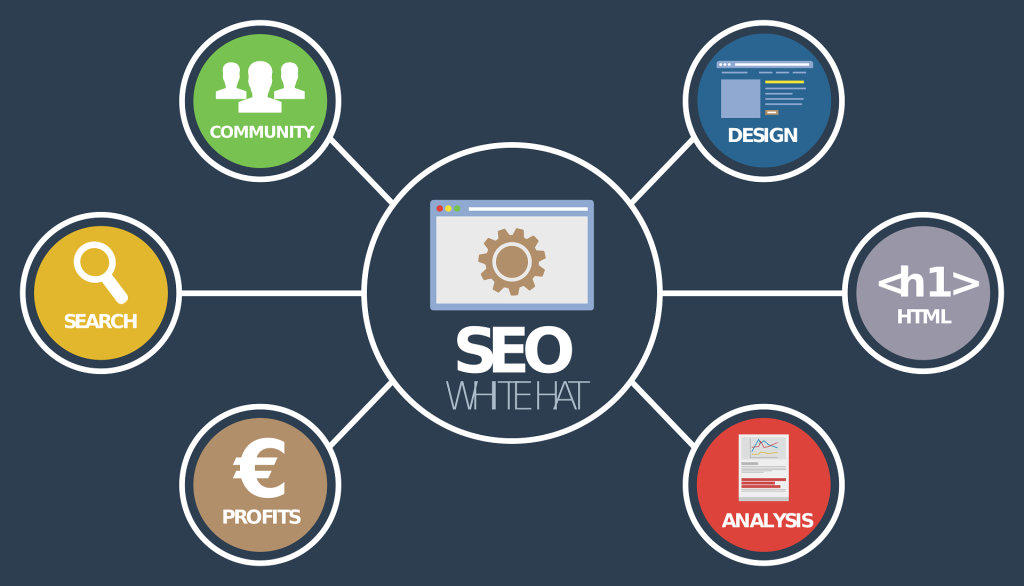
Conclusion
As a beginner, mastering SEO can seem like a daunting task, but with consistent effort and the right strategies, you can see measurable improvements in your website’s search engine rankings. SEO is not a one-time project but an ongoing process that requires adaptability and patience. In this section, we’ll discuss the key takeaways for beginners, emphasizing the importance of continuous learning and staying patient and consistent in your SEO journey.
Final Thoughts: Mastering SEO as a Beginner
Mastering SEO is a gradual process that involves both technical knowledge and creativity. From understanding the role of keywords and crafting high-quality content to building backlinks and optimizing your website’s performance, SEO requires a multifaceted approach. The key to success lies in making data-driven decisions and continuously refining your strategy based on real-time insights.
SEO is constantly evolving, with search engines regularly updating their algorithms. Therefore, it’s essential to stay informed about the latest trends, updates, and best practices to ensure that your efforts remain effective.
Continuous Learning: SEO is an Ongoing Process
SEO is not a static field—it’s dynamic and continually changing. Google’s algorithm updates, new trends in user behavior, and emerging technologies all affect how websites are ranked. As a beginner, the best thing you can do is adopt a mindset of continuous learning.
To stay ahead, consider:
- Reading SEO Blogs: Stay updated with industry-leading websites like Moz, SEMrush, and Search Engine Journal. These blogs provide insights on the latest trends and algorithm changes.
- Taking Online Courses: Many platforms offer beginner-friendly SEO courses, such as HubSpot Academy, Google’s own resources, and other platforms like Coursera and Udemy.
- Experimenting with Your Own Website: The best way to learn SEO is by applying it. Implement what you learn on your website and track the results. Experiment with different strategies, measure the performance, and make improvements.
SEO requires flexibility and an open mindset because what works today may not be as effective tomorrow. Keeping your knowledge up-to-date will give you the competitive edge you need to succeed.
The Importance of Patience and Consistency in SEO
One of the biggest challenges beginners face in SEO is the time it takes to see results. Unlike paid ads, which can deliver instant traffic, SEO is a long-term strategy. It can take weeks or even months to start seeing significant changes in your rankings and traffic.
Therefore, patience is key. Your efforts might not pay off immediately, but if you continue following SEO best practices and consistently optimize your website, you will see improvements over time. Consistency is equally important. SEO is not a one-off task—you need to regularly monitor your website’s performance, keep your content fresh, build backlinks, and adapt to any algorithm changes.
Remember, successful SEO is like planting a tree: it takes time to grow, but with consistent care, it can provide lasting benefits.
In conclusion, mastering SEO as a beginner is a journey that requires a commitment to continuous learning, patience, and consistency. With the right strategies and a long-term mindset, you can gradually improve your website’s visibility, drive more organic traffic, and achieve lasting success in the search engine rankings. Keep learning, stay adaptable, and be patient—the results will follow. You can read more article from here.



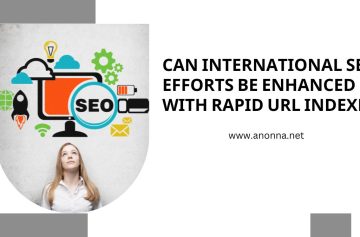

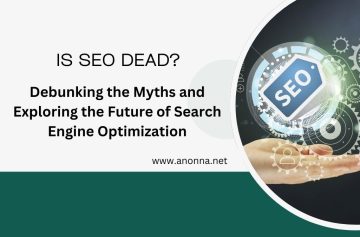
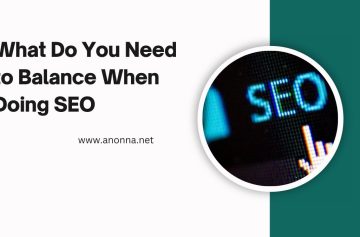

Add comment